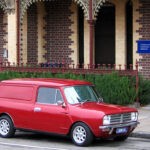Are Korean Cars Reliable? Here are the Facts
In recent years, the US auto market is filled with Korean Manufacturers. Brands like Kia and Hyundai are making incredible value cars, overpowering even the likes of Japanese.
Given the sudden demand for Korean Automotive in the US, it sure raises the question if Korean cars are reliable. Here are the facts.
Are Korean Cars Reliable?
Yes, Korean Cars are reliable. While we had plenty of decades with the durable Hondas and Toyotas, modern-day Hyundai or Kia are no less durable than the Japanese. The majority of Korean Cars in the US have above 80% reliability rating.
Just like the Japanese, these cars are also rated above 150,000 miles with an average life expectancy of 8-10 years. In a survey conducted by Consumer Reports with over 640,000 subscribers, cars from both Kia and Hyundai ranked in the top 10 for the best cars made between 2000-2017.
What makes it better is its low maintenance cost and lower frequency of repairs. While the Korean manufacturers didn’t have a similar durability history as the Hondas or Toyotas.
Active customer feedback with increasing interests is a clear indication of their rising popularity and demand. And it’s the quality and reliability of the Korean Cars that has been the real driving force behind that.
Also read: Are Hyundai Parts Expensive? (with Exact Costs)
What Korean Cars are There?
Worldwide there are more than 10 famous Korean car manufacturers, but only three have successfully infiltrated the US market. You have the Hyundai, Kia Motors, and Genesis. While both Hyundai and Kia make daily driving fun cars, Genesis is a brand dedicated to luxury saloons and SUVs.
At present, the most recognizable Korean car is the Hyundai Sonata or the Kia Forte. Other well-known Hyundai cars are the Hyundai Ioniq, Tucson, Accent, Santa Fe. As for Kia, the Kia Forte, Kia Soul, Optima, Serento and Kia Sportage. Whereas Genesis G70, G80, and G90 are some of the most common Genesis cars in the USA.
How Often Do Korean Cars Break Down?
Not very often. The frequency of repairs with Korean cars is similar to Japanese cars. Given that they have the same average reliability rating, it was to be expected.
Yes, there have been some recalls made by both Hyundai and Kia due to manufacturing faults. But these recalls have also been made by Ford, Mercedes, Tesla, Volvo. GM Motors, Subaru. So it is nothing to be alarmed about.
There is one thing, however, and that is the frequency of basic maintenance. With Korean cars, the average maintenance is between 3000-5000 miles, and the average maintenance charge is also around $450.
Read it: Are Toyotas Reliable? Which Toyotas aren’t?
Is it Expensive to Fix Korean Cars?
Korean cars are extremely inexpensive to fix. These are cars made by manufacturers that are proud of their product quality. This is the reason why these cars have good reliability and less breakdown frequency. Even for a brand like Genesis that makes luxury cars, maintenance, and repair costs are within $500 for the first few years.
As for Hyundai or Kia, unless there is a major fault, you won’t have to spend more than $500 on repairs for the first 3-4 years. Also, the long warranty offered by these companies helps reduce unwanted repair costs.
Is it Hard to Find Parts for Korean Cars?
Finding parts for international brands might sound difficult and expensive. But thanks to an incredible number of sales, more and more Korean cars are getting common in the USA. This has increased the aftermarket parts availability for Korean brands.
And has also inspired the manufacturers to build their factories in the United States. Currently, Kia operates a manufacturing plant in Georgia where the Kia Sorento, the K5 sedan, and the Kia Optima are manufactured. Similarly, Hyundai operates a manufacturing and assembly plant in Alabama for the Hyundai Elantra, Sonata, Santa Fe, Tucson, etc. Even Genesis has a plant in California.
Having production plants means that genuine parts are being built in the United States, making them easily accessible.
Read it: 10 Car Brands with the Cheapest Parts (Exact Costs)
How Many Miles Do Korean Cars Last?
The general lifespan of Korean cars is between 150,000-200,000 miles or about 15 years. While Genesis has recorded a life expectancy of 150,000 miles, Kia and Hyundai have cars that last over 200,000 miles. With certain models as in 2009, Hyundai Tucson had recorded over 218,000 miles.
Popular cars from both models including Hyundai Elantra, Santa Fe, Tucson, and Kia Forte, Kia Optima, Kia Telluride are all cars expected to run 200,000 miles with ease.
Trending Video: How to Easily Bring Back to Life any Old Car Battery and Save Tons of Money (click to watch)
Do Korean Cars Rust?
Just like every other car, Korean cars do rust. But just like all car brands, Korean manufacturers also use anti-perforation coating to protect their vehicles from corrosion. You also get a limited anti-perforation warranty from all Korean manufacturers for 5 years.
Meaning that there is very little chance of rusting your car for the first five years, despite how many miles you drive.
Are Korean Cars Expensive to Insure?
Korean cars are inexpensive to own, the same carries to the insurance cost as well. The average cost of insuring a Korean car in the USA is around $1670, whereas it cost an average of $1548 for Kia, $1600 for Hyundai, and around $1500 for Genesis as well.
However, depending on both make and model you can pay as low as $1000-$1800 in Insurance.
Also read: 5 Reasons Why Car Insurance for Teenagers is Expensive
Is Korean Car Maintenance Expensive?
Again, Korean cars are great values, and it’s their inexpensiveness that adds greatly to it. Yes, they are not as inexpensive as Toyota or a Honda, or Mazda, but they sure are affordable. The cost of maintaining a Hyundai is $468/year. As for Kia, it is around $490/year while the same is applied for Genesis.
For the first 5-years with Koran cars, you won’t have to pay more than $2000 in maintenance and repairs. But, while Korean brands don’t cost much initially, they do cost 20%-30% more than other brands in 6-7 years.
Are Korean Cars Safe?
Both Hyundai and Kia are brands that make class-leading family SUVs and sedans. So they have to make safe cars and so they do. As both brands have 5-star safety ratings for most of their models. Even the basic models are loaded with hi-end safety features.
The Kia Rio and Hyundai Elantra which are the cheapest in their lineup come with ESC, ABS, blind spot monitoring, lane keeps assisting, HAC, etc. as standard.
Genesis on the other hand is a luxury brand with not-so-tight budget restrictions. Genesis cars are loaded with advanced safety features and have earned the Top Safety+award in IIHS testing. If not more, they are as safe as any other Korean car.
Is Quality of the Elements Good in Korean Cars?
The biggest selling point of Korean cars in America is their elegant design and use of better quality materials. It is also the reason why they are most loved among people below 35 yrs.
Compared to Japanese or American or European manufacturers, Koreans can deliver high-quality interiors even at low prices. Something all others fail to do. The build quality with modern-day styling is a major benefit of buying a Korean car.
Also read: Kia vs. Hyundai: Resale Value (8 Models Compared)
What Features Do Korean Cars Offer?
Korean cars are well known for offering great value. That is not only because they have great quality interiors, modern design, it’s also because they are durable, use the best tech, are inexpensive to own, and offer great performance.
In any segment, Korean cars offer more than the class standard, most of which are standard rather than offered in paid packages. Take the Hyundai Elantra for example, its base variant is not just cheaper than Hondas and Toyota, it has more features as standard.
In most Korean cars you can expect a good interior with a multi-functional steering wheel, Apple Carplay, and Android Auto support, adjustable driver seats, folding rear seats, touch infotainment screen with HUD display. Power windows, sunroof, mirrors, and steering wheels are just extremely common.
You do get a lot of advanced safety features like hill climb assist, Electronic Stability Control, ABS, Vehicle Stability Management, Forward collision avoidance, lane departure assist and tire pressure monitor are common among all Korean cars.
Do Korean Cars Depreciate Fast?
The depreciation rate of Korean cars is initially way higher than both Japanese and American brands. Especially for the first year, all Korean cars lose an average of 20% of their total value. But surprisingly after that, it comes down to an average of 7% -8%/year.
So while you lose 20% in the first year, in the latter 5 years, due to slower rates, the car only loses 25%-30% more. This means after 5 years, you still have a residual value of above 50% and above 30% after 10 years.
In the long run, Korean cars have better resale value than that Americans but still lags behind Japanese.
Read it: 5 True Reasons Why Cars Depreciate so Fast
What are the Most and Least Reliable Korean Cars?
If you are considering buying Korean cars, here are some models to consider and some to avoid.
From Hyundai, the best models are the Hyundai Elantra, Hyundai Kona, Hyundai Ioniq, Hyundai Veloster, Santa Fe, and Accent.
The models you should avoid are 2017 Santa Fe, 2015 Equus, 2016 Tucson, 2013 Elantra, and 2011 Sonata.
From Kia, the best is the Kia Stinger, Kia Forte, Sorento, Kia K5, Telluride, Kia Soul, and the Niro EV. Models you should avoid are the Kia Cadenza and the Kia Rio.
As for Genesis, all their recent models the G70, G80, G90, along with the GV series are all great picks.
Are Korean Cars Better than Japanese?
Korean cars are better than Japanese in some segments. In areas of styling, quality features Korean lead the class. They have got the best interiors, the sexiest design, and an abundance of smart hi-tech features. They are decently reliable as well.
On the other hand, the Japanese are still the most inexpensive and durable brands ever. The Japanese have a better life expectancy, more refined engines, and have better resale value. The clear difference between these two manufactures is also seen in their customer base.
Korean cars are majorly preferred amongst young generations who are looking for style and class. While Japanese are loved by middle-aged people who want a long-term vehicle for themselves and their families.






